Guideline development process
The Guideline was developed in 2018 and updated in 2023 according to the approach described in the Guidelines for Guidelines handbook (2016), published by the National Health and Medical Research Council (NHMRC). In 2023, The Grading of Recommendations, Assessment, Development and Evaluation (GRADE) method was used to move from questions, to evidence, and then revised Recommendations (Schünemann, 2013).
Step 1: Establishing the Guideline Development Group
The first step was to establish a Guideline Development Group (GDG) to lead the research and community consultation process. To commence this process, the Co-chairs identified a range of perspectives that were critical to updating the Guideline. These perspectives included lived expertise (autistic people, family members), clinical expertise (medical and allied health practitioners), expertise in human ethics, and the lived expertise of one or more Aboriginal and/or Torres Strait Islander person/s. The Co-chairs also identified research expertise that would be relevant, including in relation to co-design of the GDG processes and research activities, that included systematic reviews, community consultation, and Guideline development. Finally, the Co-chairs considered the need for continuity from the 2018 release of the Guideline through the update, to ensure the accurate interpretation of the original context, questions, evidence, and Recommendations. Following this, the Co-chairs identified people who had knowledge, skills, and experience relevant to each of these required perspectives, and distributed invitations via email. Consideration was given to ensuring diversity within the GDG.
The GDG members are listed in Table 2. Among the 17-member group were autistic adults; parents and other family members of autistic children, including individuals with complex support needs; an Aboriginal person; a person with expertise in ethics and research integrity; practitioners with experience across government and non-government sectors; and researchers with expertise in the guideline development process, including community consultation. Three members of the GDG for this Guideline update were also part of the team that led the development of the Guideline in 2018 (Andrew Whitehouse, Kiah Evans, Valsamma Eapen). Half of the GDG members involved in the update brought both professional and personal expertise relating to autism to the GDG, which was also diverse with respect to age, gender, and culture. Processes were put in place to declare and manage any potential conflicts of interest, consistent with the NHMRC and GRADE methodologies.
Table 2. Members of the Guideline Development Group.

Mr Gary Allen
Gary Allen is the Senior Policy Officer Human Research Ethics and Research Integrity at Griffith University. Gary has worked in the human research ethics area since 1997, working with a number of research institutions, state and federal departments, private companies and research ethics committees internationally. He also has a degree in education and a professional doctorate in social sciences. Gary brings extensive experience in regards to the national and international governance of ethical conduct in research.
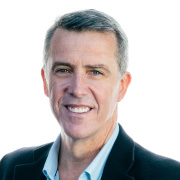
Dr James Best
Dr James Best is a General Practitioner and Chair of the Child and Young Person’s Health, Faculty of Special Interests Group, within the Royal Australian College of General Practitioners. He brings experience working with children and families in the areas of behaviour, parenting and autism, and is extensively published in medical and mainstream publications on these and other child health topics.
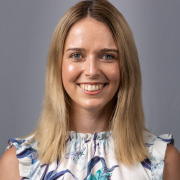
Dr Nicole Dargue
Dr Nicole Dargue is a Lecturer within the Autism Centre of Excellence, School of Education and Professional Studies at Griffith University. Her research interests include factors impacting learning and communication in autistic individuals, with a focus on nonverbal communication including gestures. She is an accredited Clinical Neuropsychologist who brings experience working with autistic individuals of all ages when navigating the diagnostic process.
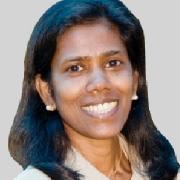
Prof Valsamma Eapen
Professor Valsamma Eapen is the Chair of Infant, Child and Adolescent Psychiatry at the University of New South Wales. An internationally-recognised child psychiatrist and researcher, Valsamma’s expertise combines extensive experience in childhood mental health and developmental disorders from a clinical and basic science research perspective.
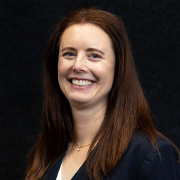
Dr Kiah Evans
Dr Kiah Evans coordinated the development of the first Guideline from 2016 to 2018. She has held leadership roles in multiple research projects over the past six years that have focused on exploring the perspectives of autistic adults, caregivers, clinicians and other key stakeholders in relation to assessment of functioning and diagnostic processes related to autism and other neurodevelopmental conditions. This included a large program of research to investigate the psychometric properties of existing assessment of functioning measures and supervision of doctoral research projects to develop new measures based on the ICF. Kiah co-led community consultation to evaluate the comparable guideline in New Zealand and was an international consultant for the development of a comparable guideline in Vietnam. She has qualifications and teaching experience in the field of health professions education.
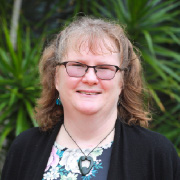
Dr Emma Goodall (Co-chair)
Dr Emma Goodall is an autistic author, advocate, qualified meditation and mindfulness teacher, adjunct researcher at the University of Southern Queensland and senior industry researcher with Griffith University. She is the Director of the South Australian Government Office for Autism. Emma also runs Healthy Possibilities, a consultancy offering personal life coaching alongside autism specific continuing professional development for educators and families and National Disability Insurance Scheme (NDIS) services (many with a link to interoception). Emma speaks widely on the topic of interoception and the role mindful body awareness plays in emotional regulation.
Dr Emma Goodall was Co-chair of the Guideline Development Group for this Guideline.

Ms Emma Hinze
Emma Hinze is a PhD candidate within the School of Applied Psychology at Griffith University. She brings lived experience as a parent and caregiver to her autistic son, as well as knowledge gained through her research and work with autistic adolescents and adults.

Mr Will Foster
Will Foster is an autistic adult who enjoys spending time with family and friends, building various Lego projects, engaging in the community, and enjoys making puppets, cooking, and exercising.
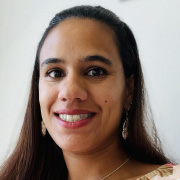
Dr Mandira Hiremath
Dr Mandira Hiremath is a general paediatrician at Western Health, a board director for the Neurodevelopmental and Behavioural Paediatric Society of Australasia and has also completed further studies in public health. She has extensive clinical experience in the diagnosis of Autism Spectrum Disorder in children and additionally supporting children and their families through a range of mental health and developmental concerns.

Dr Wenn Lawson
Dr Wenn Lawson is an Adjunct Associate Professor at Curtin University. Wenn is a Senior Researcher in the area of autism and supports PhD students through supervision, working on various projects, and is a member of the Curtin Autism Research Group (CARG).

Dr Rhylee Sulek
Dr Rhylee Sulek is a Research Fellow within the School of Health Sciences and Social Work, Griffith University. She brings experience in working with young autistic children and their families when receiving early supports and therapies, and the inclusion of key stakeholders in the co-production of research.

Dr Samarra Toby
Dr Samarra Toby is a First Nations Medical Doctor who specialises in General Practice. Dr Toby has an interest in nutritional and environmental medicine, aerospace medicine, medical ecology and First Nations Translational Health Research.
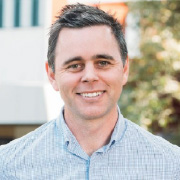
A/Prof David Trembath (Co-chair)
David Trembath is an Associate Professor in Speech Pathology at the Menzies Health Institute Queensland, Griffith University and Honorary Research Fellow at CliniKids, Telethon Kids Institute. He brings over 20 years of clinical-research experience working with autistic children and their families. David was Co-chair of the Guideline Development Group responsible for developing Autism CRC’s National Guideline for supporting the learning, participation, and wellbeing of autistic children and their families in Australia.
David was Co-chair of the Guideline Development Group for this Guideline update.

Dr Kandice Varcin
Dr Kandice Varcin is a Research Fellow at the Menzies Health Institute Queensland, Griffith University and Honorary Research Associate at CliniKids, Telethon Kids Institute. She is also a registered psychologist who brings experience and expertise in research focused on autism, early development and the evaluation of therapies and supports for young children and their families.
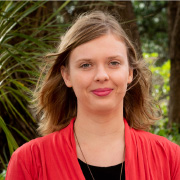
Dr Hannah Waddington
Dr Hannah Waddington is a Senior Lecturer at Victoria University of Wellington and the Clinic Lead of the Victoria University of Wellington Autism clinic. She is also a practicing educational psychologist who brings experience in provision of early support to autistic children and their families.

Prof Andrew Whitehouse
Andrew Whitehouse is a Speech Pathologist and Angela Wright Bennett Professor of Autism at the Telethon Kids Institute and the University of Western Australia. Andrew is also the Director of CliniKids, a clinical research centre of excellence for autistic children, and is Autism CRC’s Research Strategy Director. He brings over 20 years’ clinical research experience in working with autistic children and their families. He also brings experience in Guideline development, having chaired the development of the original version of the National Guideline for the Assessment and Diagnosis of Autism in Australia, and co-chaired the development of the National Guideline for supporting the learning, participation, and wellbeing of autistic children and their families in Australia.

Dr Rachelle Wicks
Dr Rachelle Wicks is an autistic research fellow within Griffith University’s Autism Centre of Excellence. She brings lived experience as a late-diagnosed woman and professional experience in early literacy and assessment for young autistic children, as well as knowledge of the varied perspectives and needs of individuals within the autistic and autism communities gained through her research and work with autistic children, their families, and service providers.
To support its work in community consultation, the GDG formed a Reference Group, comprising representatives from organisations with members that play a critical role in assessment and diagnosis of autism or support, and reflect the views of autistic people and family members; that represent Aboriginal and Torres Strait Islander Peoples, and represent culturally and linguistically diverse communities; or that were from a relevant Government Department (Department of Social Services, Department of Health) or agency (National Disability Insurance Agency). Members of the Reference Group, and the national peak bodies they represented, are listed in Table 3.
|
Stakeholder group |
Organisation |
Representative |
Position |
|---|---|---|---|
|
Autistic people |
Autistic Self Advocacy Network – Australia and New Zealand |
Cheryl Koch |
Board member |
|
Family members of autistic people |
Autism Awareness Australia |
Nicole Hurley |
Head of Fundraising and Partnerships |
|
First Nations Peoples |
National Aboriginal Community Controlled Health Organisation (NACCHO) |
Thea Dunkley |
Assistant Director, Disability |
|
Jess Styles |
Director, Programs |
||
|
Culturally and linguistically diverse communities |
Australian Multicultural Health Collaborative |
Daniel Coase |
Senior Advisor |
|
Focusing on health |
Neurodevelopmental and Behavioural Paediatrics Society of Australasia |
John Wray |
Member |
|
Focusing on health |
Australian College of Nurse Practitioners |
Stephanie Dowden |
Member |
|
Focusing on health |
Royal Australian College of General Practitioners |
Alison Palmer |
Member |
|
Focusing on health |
Royal Australian and New Zealand Colleague of Psychiatrists |
Matthew Sellen |
Member, RANZCP Section of Psychiatry of Intellectual and Developmental Disabilities |
|
Focusing on social-communication functioning |
Speech Pathology Australia |
Amy Fitzpatrick |
Senior Advisor, Disability |
|
Focusing on physical functioning |
Australian Physiotherapy Association |
Kristy Nicola |
APA National Paediatric Group – Deputy Chair |
|
Focusing on cognitive functioning and mental health |
Australian Psychological Society |
Catriona Davis-McCabe |
APS President |
|
Focusing on sensory functioning and occupations |
Occupational Therapy Australia |
Gaynor Gray |
Divisional Manager (QLD), Occupational Therapy Australia |
|
Focusing on rural health |
National Rural Health Alliance |
Susanne Tegen |
Chief Executive |
|
Representing service providers (peak body) |
Australian Autism Alliance |
Frances Scodellaro |
Member |
|
Representing researchers |
Australasian Society for Autism Research |
Josephine Barbaro |
Treasurer |
|
Government |
Australian Government Department of Education |
Susan Aitkin |
Improving Student Outcomes Division |
|
Government |
Department of Social Services |
Angela Warner |
Assistant Director, Autism Policy Team, Disability Support Branch |
|
Government |
National Disability Insurance Agency |
Sam Bennett |
General Manager Policy, Advice and Research Division |
Step 2: Revising the Guideline questions
The GDG reviewed questions that formed the basis of the original version of the Guideline and considered whether any changes were required. In considering possible changes, the GDG reflected on (a) whether the questions remained relevant, (b) if any new questions should be added to reflect changes in the community and practice, and (c) if re-wording and/or organisation of questions could improve readability and reduce repetition within the Guideline. The revised questions are presented in Table 4.
The GRADE framework typically recommends the formulation of questions structured in a PICO format (Patient, Intervention, Comparison, Outcome). However, because of the purpose and objectives of the current Guideline, the relevance of PICO questions to the aspects of practice considered, and the nature and availability of research evidence that would inform the answers to the questions, the questions for this Guideline were structured around aspects of professional practice that impact on the experiences and outcomes for individuals accessing an assessment for autism. For this same reason, the Recommendations included in the Guideline are considered Consensus-Based Recommendations, drawing on evidence from the research literature, combined with evidence collected through extensive community consultation.
|
Section |
Question |
|---|---|
|
Guiding principles |
What guiding principles should be followed in the assessment and diagnosis of autism? |
|
Foundations of Assessment |
What should be the process for assessment and diagnosis of autism in the Australian context? |
|
What knowledge, skills, training, support, and regulations are required to conduct components of the Comprehensive Needs Assessment and Diagnostic Evaluation? |
|
|
What settings are appropriate for assessment? |
|
|
How should information be collected in an assessment? |
|
|
How should information be shared? |
|
|
When should referral for health, education, disability, social, and/or community supports be considered? |
|
|
How should the quality and safety of the assessment and diagnostic process be optimised? |
|
|
Making a referral for assessment |
When should a referral for autism assessment be initiated? |
|
Who should initiate a referral for autism assessment? |
|
|
What information should be collected? |
|
|
What should be the outcome once a referral for assessment has been considered? |
|
|
Comprehensive Needs Assessment |
When should an Assessment of Functioning be conducted? |
|
Who should conduct an Assessment of Functioning? |
|
|
What information should be collected as part of an Assessment of Functioning? |
|
|
What should be the outcomes of an Assessment of Functioning? |
|
|
When should a Medical Evaluation be conducted? |
|
|
Who should conduct a Medical Evaluation? |
|
|
What information should be collected in a Medical Evaluation? |
|
|
What should be the outcomes of a Medical Evaluation? |
|
|
Diagnostic Evaluation |
When should a Diagnostic Evaluation be conducted? |
|
Who should conduct a Diagnostic Evaluation? |
|
|
What information should be collected in a Diagnostic Evaluation? |
|
|
What information should be considered in making a diagnosis? |
|
|
How should a diagnostic decision be made? |
|
|
What should be the outcomes of a Diagnostic Evaluation? |
Step 3: Gathering evidence
Evidence can take many forms. For this Guideline, there was a concerted effort to gather evidence through a systematic review of the research evidence alongside extensive community consultation. Evidence was gathered from October to December 2022 using a structured research process. Ethical approval for the community consultation activities was procured through the Griffith University Human Research Ethics Committee (2022/780). The day-to-day work in gathering evidence was primarily undertaken by 9 members of the GDG: Nicole Dargue, Emma Goodall, Emma Hinze, Rhylee Sulek, David Trembath, Kandice Varcin, Hannah Waddington, Andrew Whitehouse, and Rachelle Wicks with research assistant support from Briohny Dempsey, Amy Giesberts, and Libby Groves. The literature reviews and community consultation activities are described in detail in the Administration and Technical Report. In brief, these activities comprised the following:
Literature review
An umbrella review was conducted to collect and synthesise research evidence, published between 2018-2022, that relates to assessment and diagnosis of autism. This was a systematic review of 16 systematic reviews that examined evidence relating to: (a) existing guidance for assessment and diagnosis, (b) clinical tools and processes, (c) considerations regarding personal and environmental factors, and (d) experiences of members of the autistic and autism communities.
Community consultation activities
Two community consultation activities were conducted to provide opportunities for community members in Australia to give input into the update of the Guideline. The community consultation activities were advertised through the Autism CRC mailing list and traditional and social media networks:
- An online survey designed to understand experiences and current views and preferences of the autistic and autism communities regarding assessment and diagnosis of autism in Australia. The survey was open to all members of the autistic and autism communities. It was accessed 1,000 times with 805 people providing informed consent and responses.
- A series of nine focus groups designed to provide an opportunity for autistic adults, family members, and practitioners to reflect on and discuss their experiences, views and preferences regarding assessment and diagnosis of autism in Australia. There were 246 people who registered to attend a focus group, with 68 participating.
Step 4: Reformatting the Guideline text
The original Guideline was developed according to NHMRC Guidelines for Guidelines handbook (2016) but did not use the GRADE method for moving from evidence to Recommendations. To ensure that GRADE could be applied when updating the Guideline, reconfiguration of Recommendations and accompanying text was required, prior to updating Recommendations based on new evidence and applying GRADE. The process of reconfiguring the text also provided an opportunity to align formatting with the approach taken with Autism CRC’s National Guideline for supporting the learning, participation, and wellbeing of autistic children and their families in Australia (Trembath et al., 2023). Aligning the formatting in this way should help practitioners in moving seamlessly from one Guideline to the other when working with autistic children and will lay the foundation for similar consistency across other Guidelines in the future.
The process of reconfiguring the Recommendations and accompanying text involved five steps:
- All text from the original Guideline was transferred to a Microsoft Excel spreadsheet and organised according to the original Guideline questions.
- This text was re-organised according to the updated Guideline questions.
- The Recommendations and accompanying text related to each of the updated Guideline questions was reviewed, individually and as a group.
- The text was reconfigured into a set of revised Recommendations, Good Practice Points, and if relevant accompanying text. At this point, no changes in the scope or meaning of the Recommendations was allowed, only changes to the way the information was presented.
- The Chair of the original Guideline Development Group (Andrew Whitehouse) reviewed the original and reconfigured text to ensure continuity in scope and meaning of Recommendations between the original Guideline and updated draft Recommendations, Good Practice Points, and accompanying text.
Step 5: Moving from evidence to Recommendations
An iterative process, built around an Evidence to Decision framework, was used to move from evidence to Recommendations (Alonso-Coello, Oxman et al., 2016; Alonso-Coello, Schünemann, et al., 2016). The process was led within the GDG by a Draft Recommendations Working Group (DRWG; Nicole Dargue, Emma Goodall, Emma Hinze, Rhylee Sulek, David Trembath, Kandice Varcin, Hannah Waddington, Andrew Whitehouse, Rachelle Wicks) with support from research staff (Veronica Frewer, Libby Groves) to analyse data from the community consultation activities and review the draft updated Recommendations in light of the evidence generated.
Evidence review and preparation of draft 1 of updated Recommendations
Members of DRWG and research staff reviewed the draft updated Recommendations against evidence from the umbrella review and community consultation activities. In doing so, they considered if each Recommendation should be retained in its original form, be revised based on new evidence, or be removed based on new evidence. The team also considered whether one or more new Recommendations should be added. Proposed edits, along with the supporting evidence from the umbrella review and/or community consultation, were documented first in an Excel spreadsheet that contained the evidence summary for each Recommendation, and second in the draft updated Guideline. One Co-chair reviewed the proposed edits and either endorsed them immediately or sought further clarification and consensus with the team before endorsing. The second Co-chair and all members of the DRWG reviewed the edits and any disagreements were discussed until consensus was achieved.
Guideline Development Group review of draft 1 of updated Recommendations
The DRWG shared the draft updated Recommendations and Good Practice Points with the GDG. The GDG provided feedback at the monthly meeting and via suggestions in shared documents.
Grade of Recommendation judgements and preparation of draft 2 of updated Recommendations
Members of the DRWG incorporated feedback provided by GDG members to further update Recommendations and Good Practice Points. The DRWG also independently completed a review and judgement of each Recommendation against the seven criteria required within the GRADE Evidence to Decision framework (Alonso-Coello, Oxman et al., 2016; Alonso-Coello, Schünemann, et al., 2016). The judgements related to certainty of evidence, benefits and risks, values and preferences, resource implications, equity considerations, acceptability, and feasibility. The judgements occurred over five rounds, with the first involving independent review, followed by consensus review, and then review by the broader GDG.
Based on the judgements, each Recommendation was then classified as either a ‘strong’ Recommendation or a ‘conditional’ Recommendation, as per the GRADE process and reflecting the confidence in the clarity of the balance between desirable and undesirable consequences. In the case of this Guideline, ‘conditional’ Recommendations indicated: uncertainty around alignment with values and preferences of autistic people; a possible reduction in health equity across populations; uncertainty around the acceptability of the Recommendation for practitioners; and/or a possible lack of feasibility in implementation. The classifications reflect the judgements of the GDG, based on the available evidence and other relevant considerations such as alignment with international conventions. The complete set of judgements is provided in the Supporting Evidence document accompanying this Guideline.
The grade of a given Recommendation does not reflect whether that Recommendation should be implemented or prioritised. All Recommendations within the Guideline represent good practice and should be implemented. Rather, the grade of Recommendations (strong, conditional) is intended to support users in considering a range of factors when implementing a given Recommendation, such as the benefits and harms, resources needed, and the acceptability to individuals, families, and practitioners. A grading of a Recommendation as ‘conditional’ reflects a judgment that there are key factors to consider during implementation. Further information on the grading of each Recommendation is provided in the Supporting Evidence document.
The DRWG prepared the draft updated Guideline and shared it with the GDG, alongside the complete set of evidence summaries and Evidence to Decision (EtD) judgements. These documents were reviewed and then discussed by members at a meeting of the GDG. The GDG endorsed the documents, subject to further minor edits and formatting.
Step 6: Public consultation on draft updated Guideline
The GDG prepared the draft updated Guideline and supporting documents (Supporting Evidence, Administration and Technical Report, and Easy Read summary) for public consultation, which opened on 17th April 2023 and closed on 29th May 2023 (a 6-week period).
Ahead of public consultation
The public consultation on the draft updated Guideline complied with Section 14A of the Commonwealth National Health and Medical Research Council Act 1992 and accompanying regulations. The following activities were undertaken ahead of the public consultation period:
- Autism CRC updated its webpage devoted to the Guideline update to reflect the upcoming consultation period and the invitation to participate.
- Autism CRC announced the upcoming public consultation period, via an email distributed to people who had registered specifically for updates on the Guideline, as well as to people whose details were listed in the Autism CRC communications database more broadly. Key professional and consumer organisations were identified through the Reference Group and were invited to provide feedback. Further announcements were made via Autism CRC social media, and then re-posted by GDG members.
- An email was sent to the Office of the Director General, Chief Executive or Secretary of each state, territory, and Commonwealth Health Department to prepare those offices for the publication of the draft updated Guideline. These officers were then directly emailed the draft updated Guideline, when it was released.
During public consultation
During public consultation, Autism CRC:
- Updated its website to include:
- Direct links to the draft updated Guideline, Supporting Evidence, Administration and Technical Report, and an Easy Read summary of the Guiding Principles.
- A link to participate in an online feedback survey.
- Announced the opening and closing of the public consultation period via email and social media.
- Sent reminders inviting participation throughout the public consultation period.
Feedback survey
Public consultation feedback was collected via a custom online survey, developed by the GDG and delivered via REDCap (Griffith University). The survey link directed all participants to a Participant Information Statement and Consent form. For consenting participants, they were then given the opportunity to provide feedback on the draft updated Guideline by (a) providing feedback on the Guideline sections, (b) providing feedback on specific Recommendations and Good Practice Points, and (c) providing any other general feedback about the draft updated Guideline. Participants were able to choose the number of questions they answered. Furthermore, participants were able to choose whether to provide feedback as an individual, or on behalf of an organisation. Where feedback was provided on behalf of an individual, participants were able to choose whether or not they would like their feedback to be published anonymously in the final updated Guideline. Where feedback was provided on behalf of an organisation, a copy of the survey was available for download to assist those completing the survey to compile feedback within their organisation.
The feedback survey was accessed 821 times during the consultation period with 808 individuals providing informed consent. Of the 808 individuals providing informed consent, 358 provided feedback on the draft updated Guideline. Of those who provided feedback (and hence, the submission was considered by the GDG), 339 participants indicated that they were providing feedback as an individual and 19 participants indicated that they were providing feedback on behalf of an organisation.
Independent review: AGREE-II
As per NHMRC Guidelines for Guidelines, the GDG arranged for the draft updated Guideline to be reviewed by two independent researchers with experience with the Appraisal of Guidelines for Research & Evaluation Instrument (AGREE-II) checklist: Dr Bahareh Afsharnejad (Curtin University) and Professor David Amor (University of Melbourne; Murdoch Children’s Research Institute; The Royal Children’s Hospital).
Independent review: NHMRC
The NHMRC organised for five experts across four countries (Australia, New Zealand, United Kingdom, United States) to independently review the draft updated Guideline using a standard form supplied by NHMRC. These reviewers focused on the extent to which the draft updated Guideline aligned with its identified scope and clinical questions, whether the Recommendations adequately consider the risks and potential harms of clinical practice, and whether there are relevant international guidelines on the same topic that conflict with the Recommendations made. The NHMRC also arranged for methodological review of the draft updated Guideline, focusing on the extent to which the draft updated Guideline complied with the NHMRC Standards for Guidelines.
Health Department review
The Office of the Director General, Chief Executive or Secretary of each State, Territory, and Commonwealth Health Department were invited to provide feedback on the draft updated Guideline, in a form of their choosing (e.g., letter).
Step 7: Analysing feedback and revisions
All feedback received through public consultation and independent review was considered and used to inform revisions to the updated Guideline where relevant, in a systematic manner.
Feedback from public consultation
The DRWG, which for this process included members of the GDG (Emma Goodall, Emma Hinze, Rhylee Sulek, David Trembath, Kandice Varcin, Andrew Whitehouse, Rachelle Wicks) with research support from Amy Giesberts, reviewed each piece of feedback received through the online feedback survey. There was a structured process for responding to each piece of feedback:
- One member of the DRWG exported all of the feedback from the survey portal into a spreadsheet. All feedback in the spreadsheet was de-identified (i.e., there was no demographic or organisational information attached to the feedback). Feedback on the (a) sections of the draft updated Guideline, and (b) Recommendations were collated in one tab, for the GDG to review and respond. General ‘other’ feedback on the draft updated Guideline was collated in a separate tab for the GDG to review but there was no formal, published response to this feedback, as specified to participants in the online survey.
- Feedback was then read by a member of the DRWG, and an initial response and/or proposed change to the Guideline was drafted, where possible. At this point, feedback was categorised as either (a) requiring no change to the Guideline, (b) requiring a possible change to the Guideline, or (c) requiring broader consultation with the DRWG to address the feedback.
- A second member of the DRWG then reviewed the feedback and the initial response and/or proposed change and noted that they either (a) agreed with the initial DRWG member’s response, or (b) they proposed an amendment to the initial response.
- For feedback requiring broader consultation with the DRWG, the feedback was collated and brought to the full DRWG for discussion and a group consensus decision was made regarding a response and/or change to the Guideline.
- At least one Co-chair then reviewed every piece of feedback and either endorsed the proposed response without changes or endorsed the proposed response with changes.
- Final, agreed upon changes were incorporated into the Guideline document by DRWG members, and all corresponding points in the Administration and Technical Report, Supporting Evidence, and Easy Read summary of the Guiding Principles.
- The DRWG and the broader GDG were provided the opportunity to review every change proposed in all documents.
- The DRWG members then compiled all feedback and the final responses (including why or why not a change was made to the Guideline) as well as the nature and location of any change that had been made. The feedback tables are provided in the Public Consultation Summary, published with the updated Guideline.
Feedback from independent review: AGREE-II expert reviews
All feedback was considered by members of the DRWG and changes made where relevant
(e.g., a new section further explaining the applicability of the Recommendations when working with all clients, including those with complex needs, was added to the introduction of the Guideline).
Feedback from independent review: NHMRC expert reviews
All feedback was considered by members of the DRWG and changes made where relevant. A copy of the reviewer feedback and the GDG’s responses is provided in the Public Consultation Summary.
Feedback from Health Departments reviews
All feedback was considered by members of the DRWG and changes made where relevant. A copy of the reviewer feedback and the GDG’s responses is provided in the Public Consultation Summary.
Guideline Development Group review of feedback and changes
All GDG members were provided with a penultimate draft of the updated Guideline with changes highlighted and accompanying comments that explained the changes made. The GDG members had access to the complete set of feedback from the Public Consultation and independent review process. Once satisfied, each member of the GDG confirmed their endorsement of the documents via email to the GDG Co-chairs.
